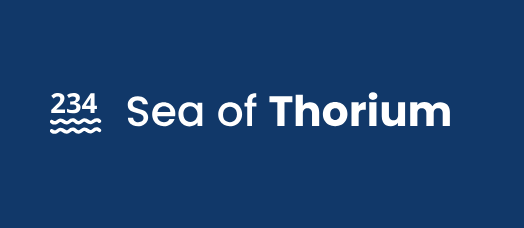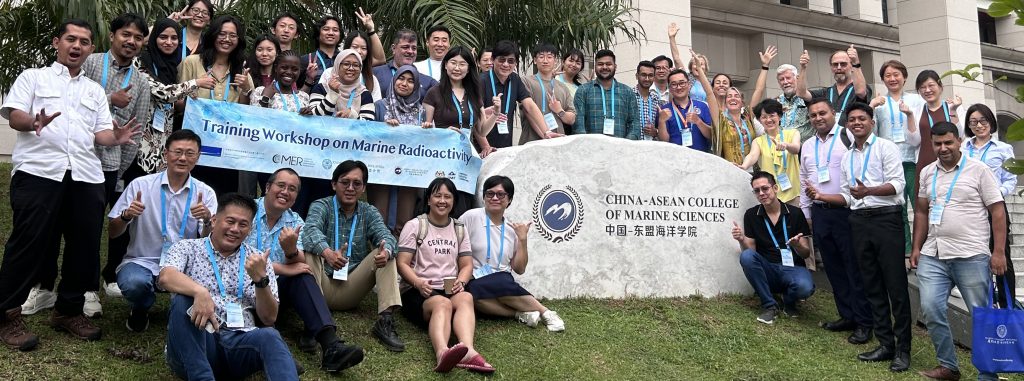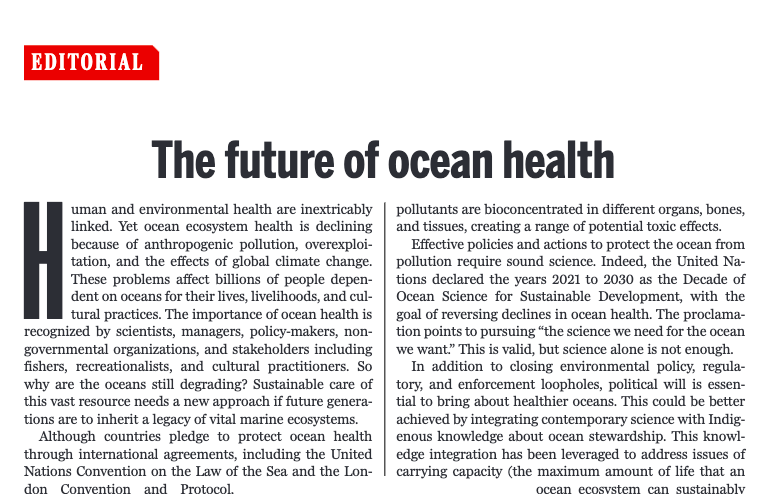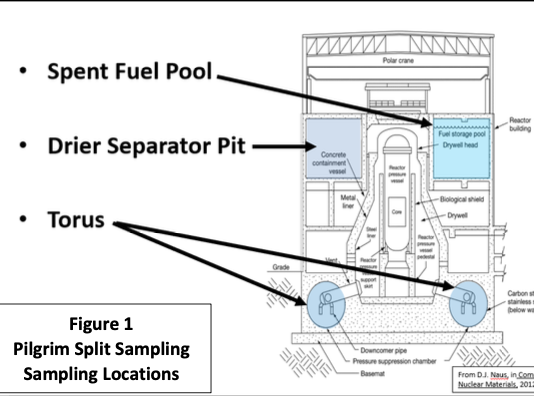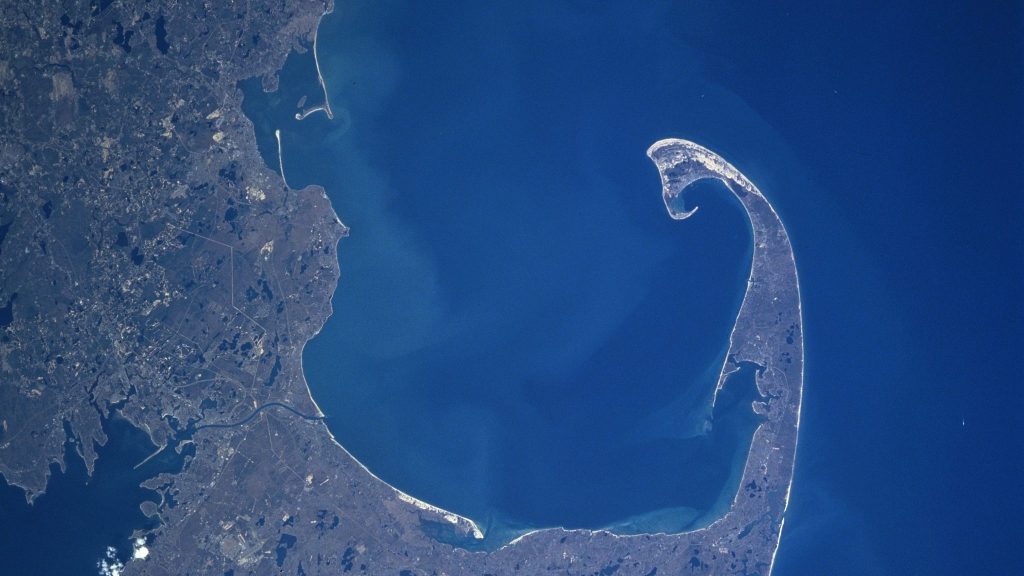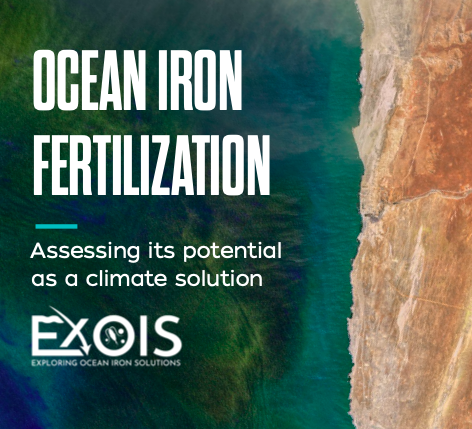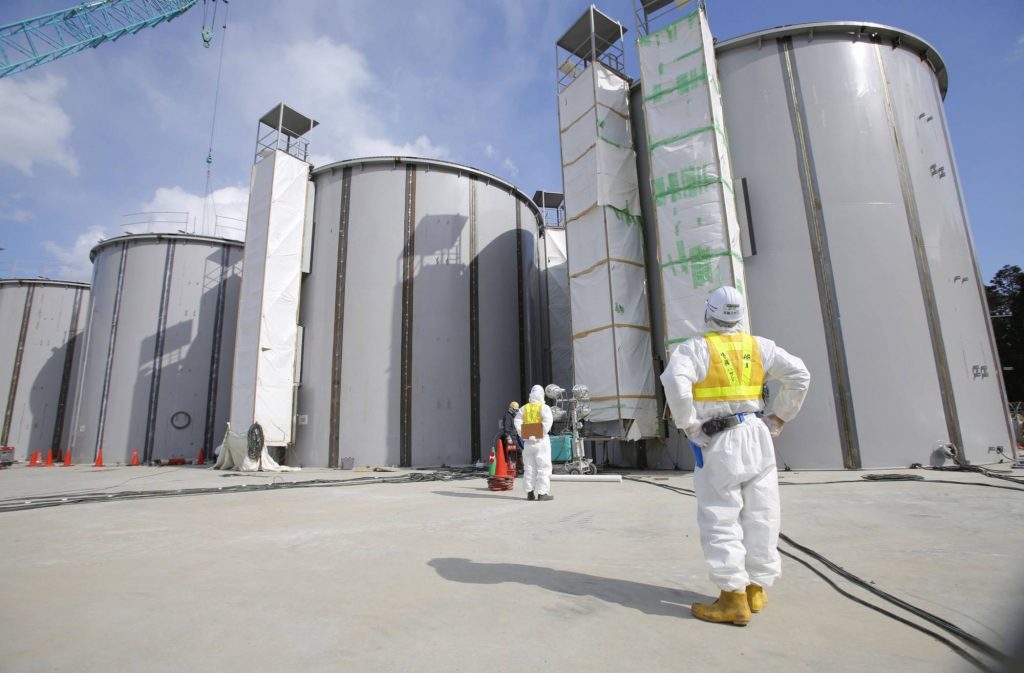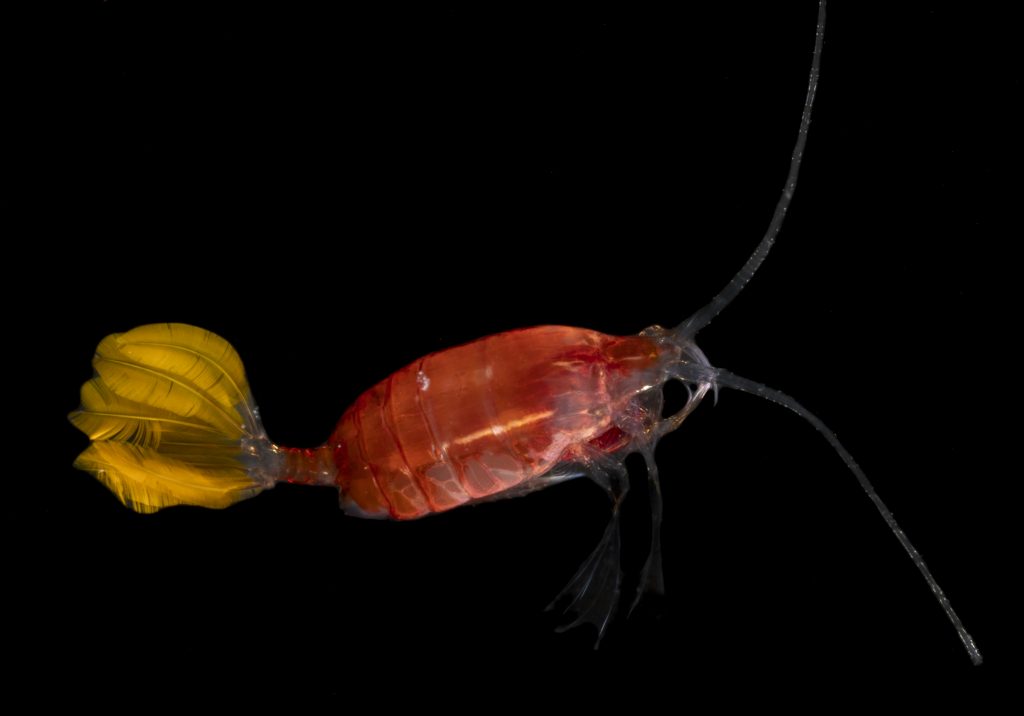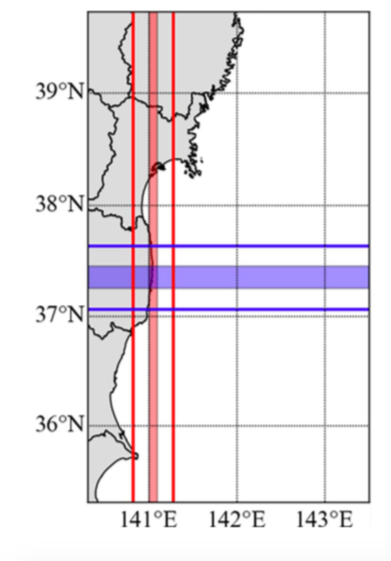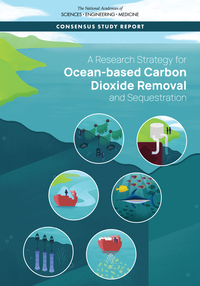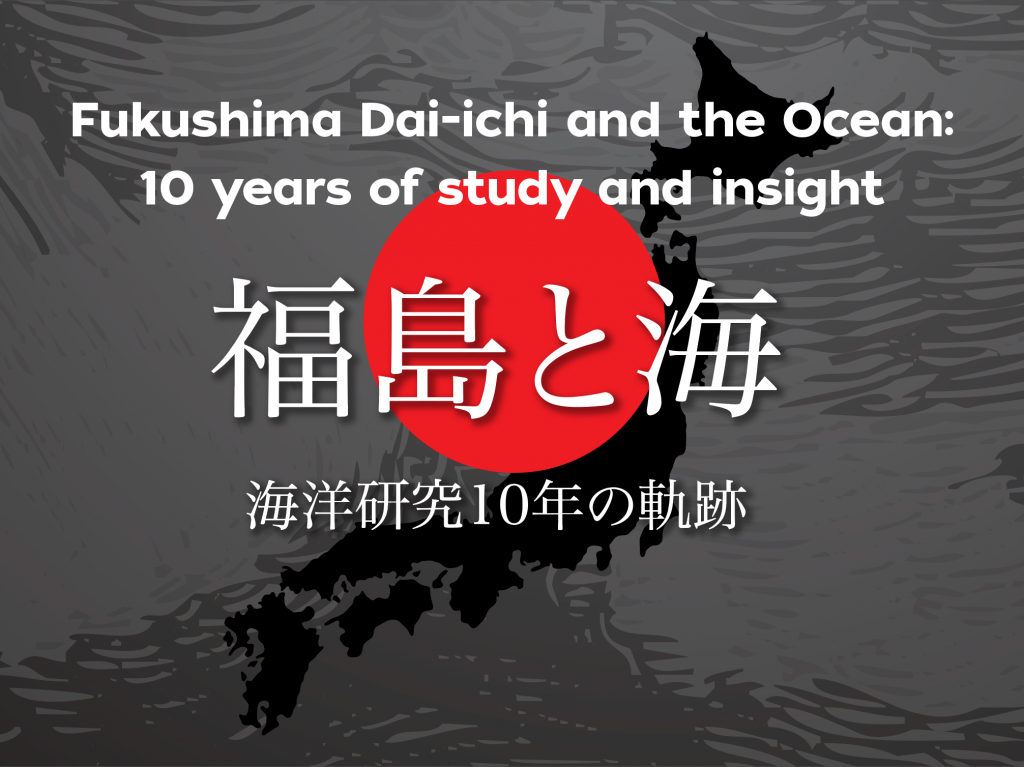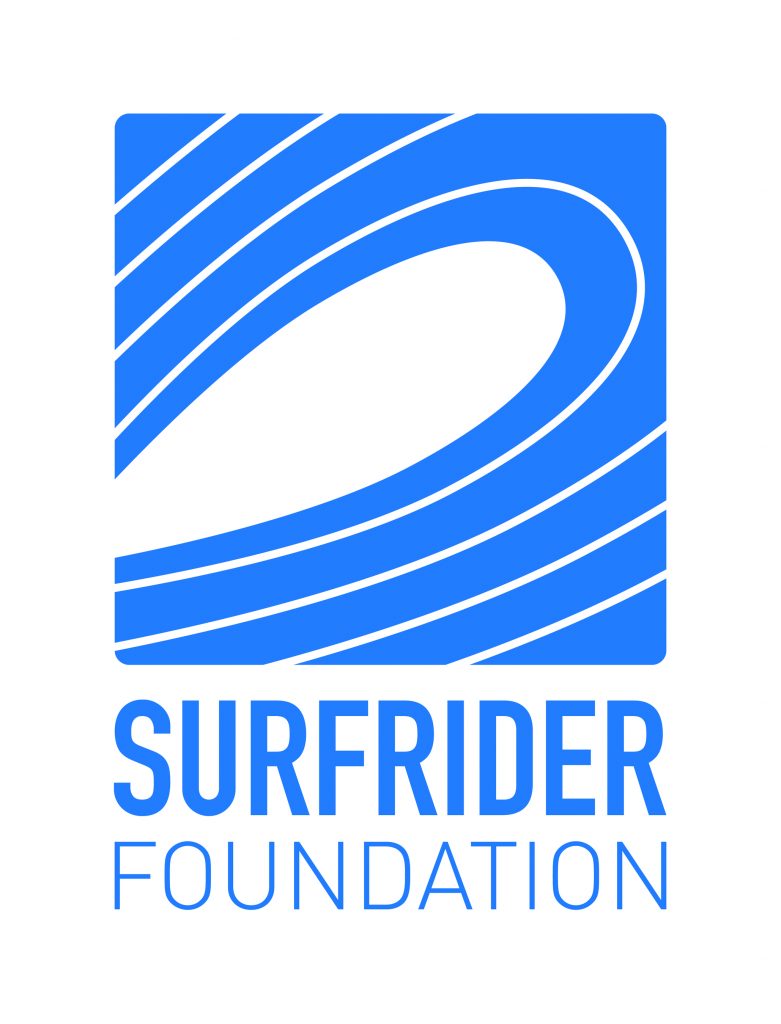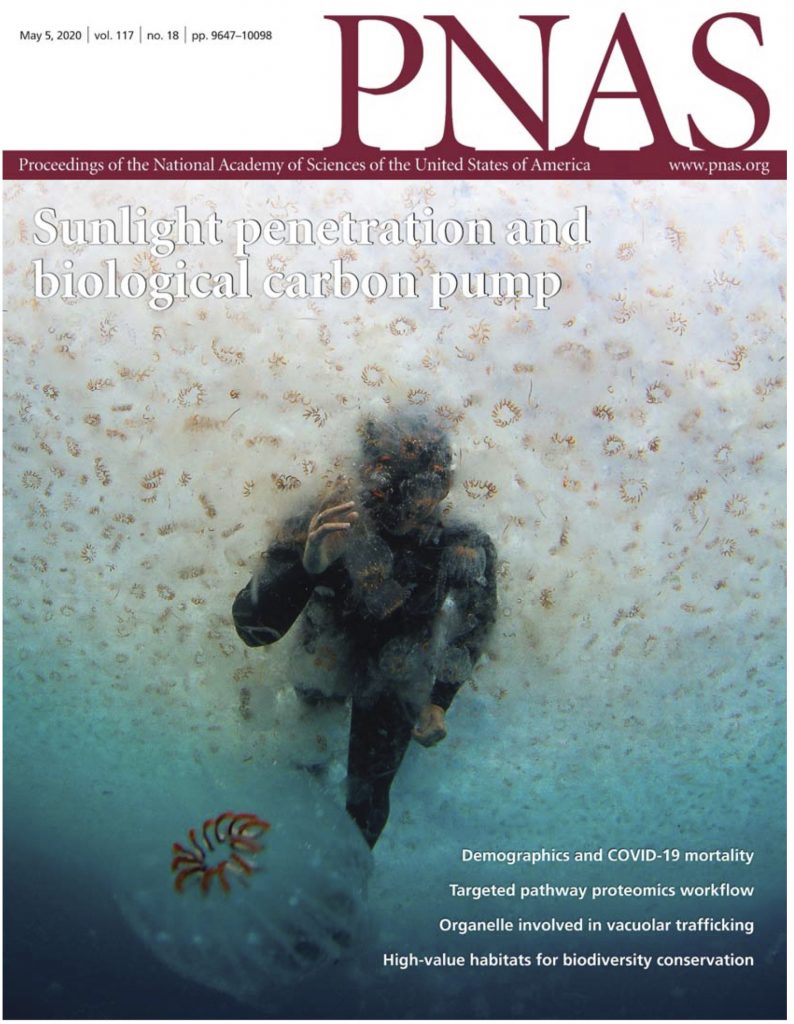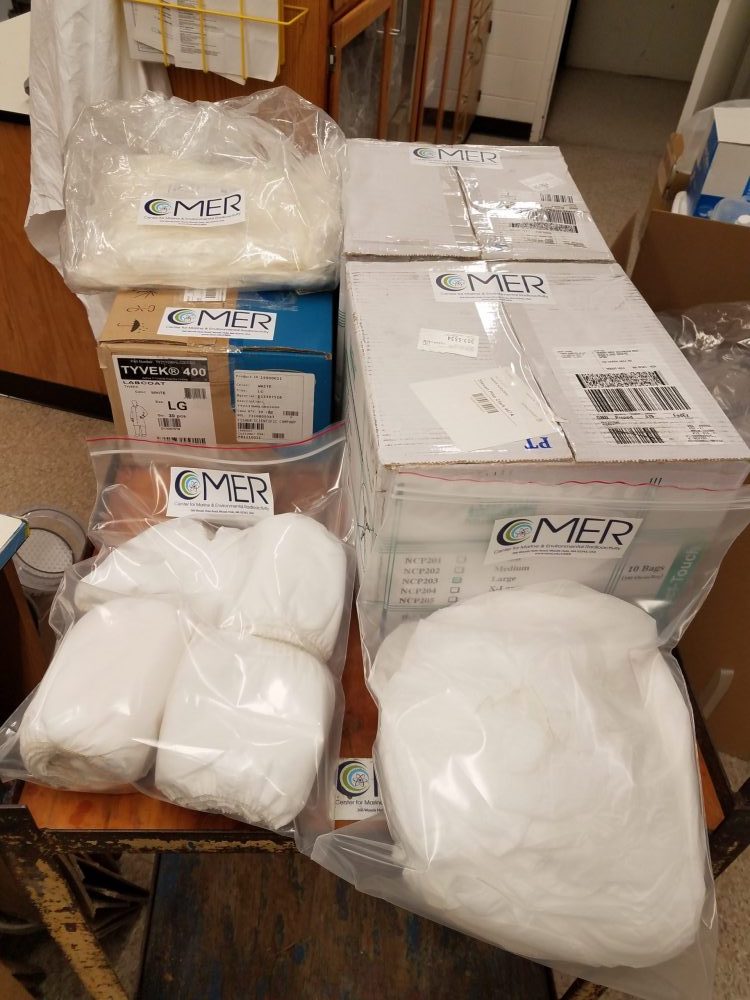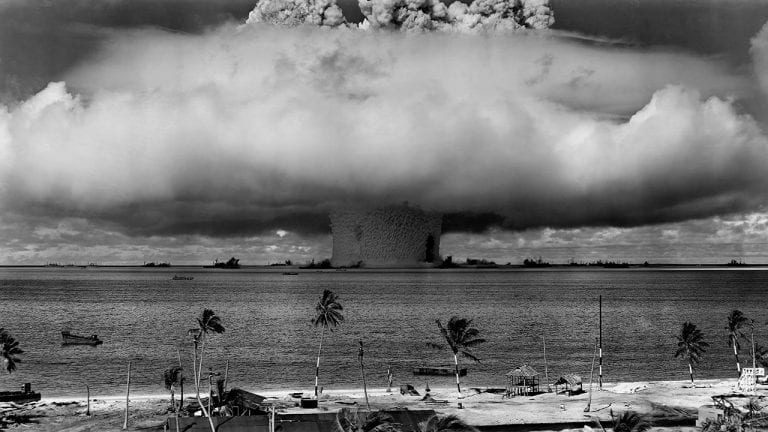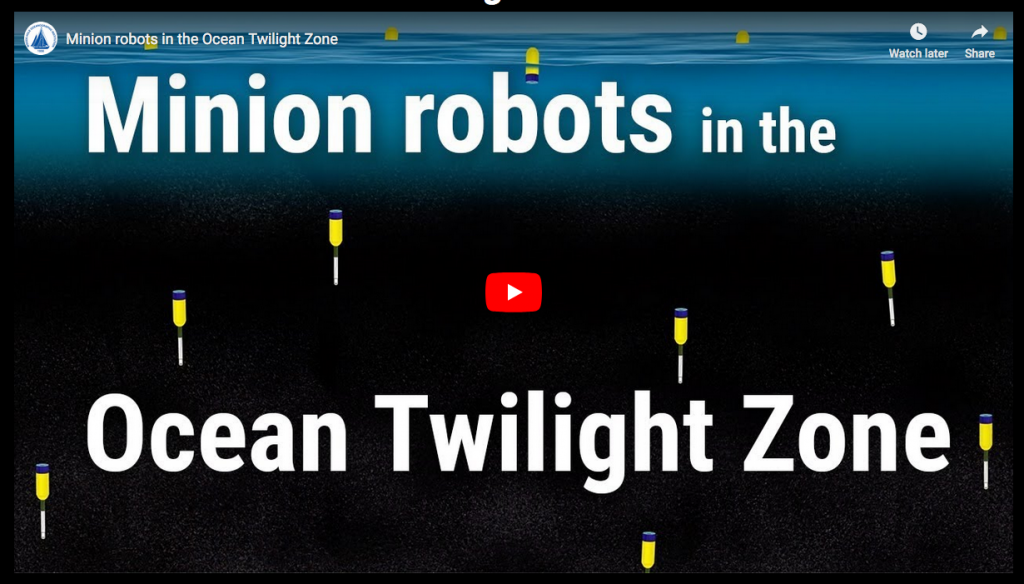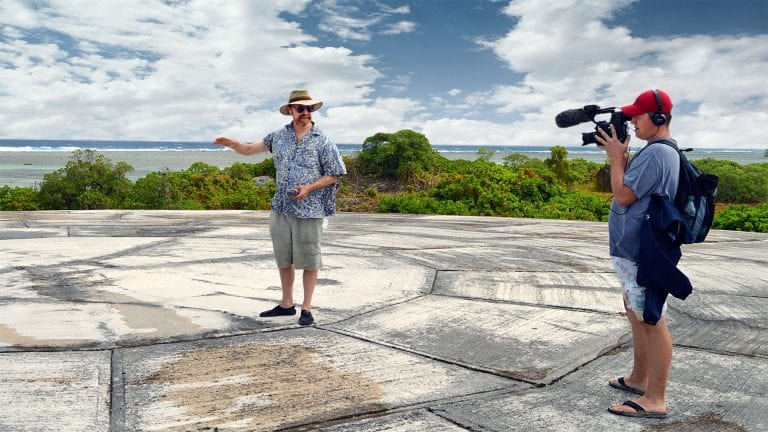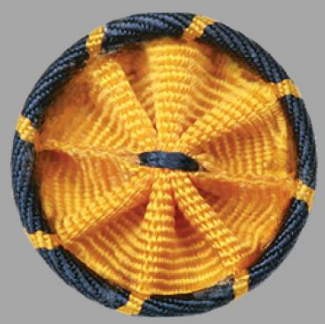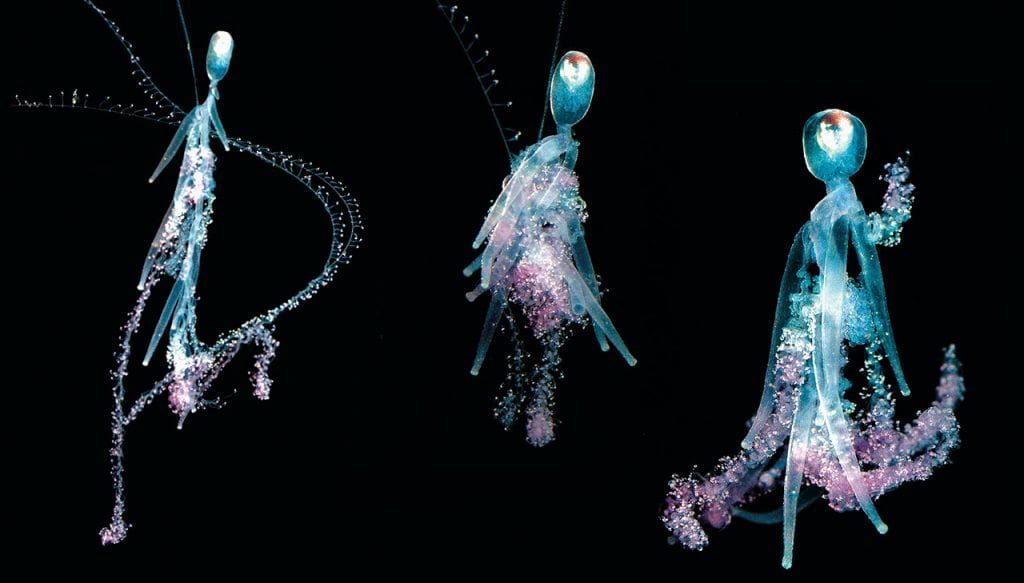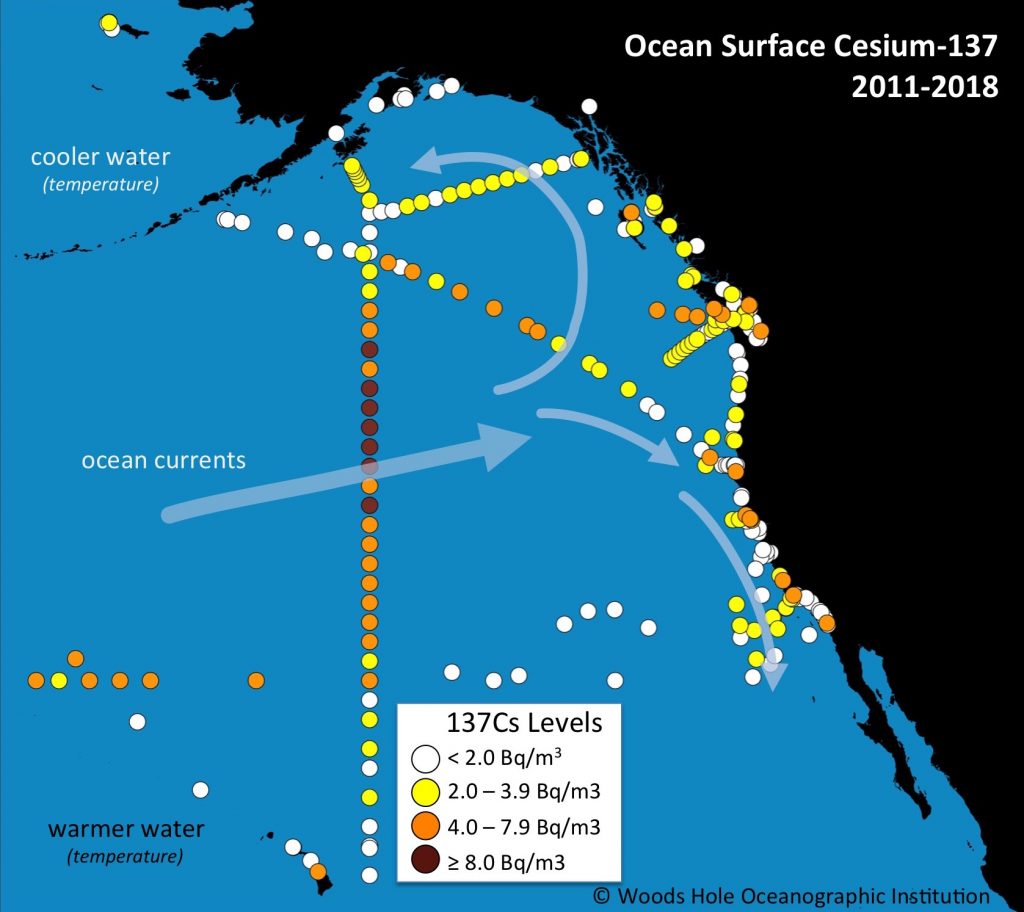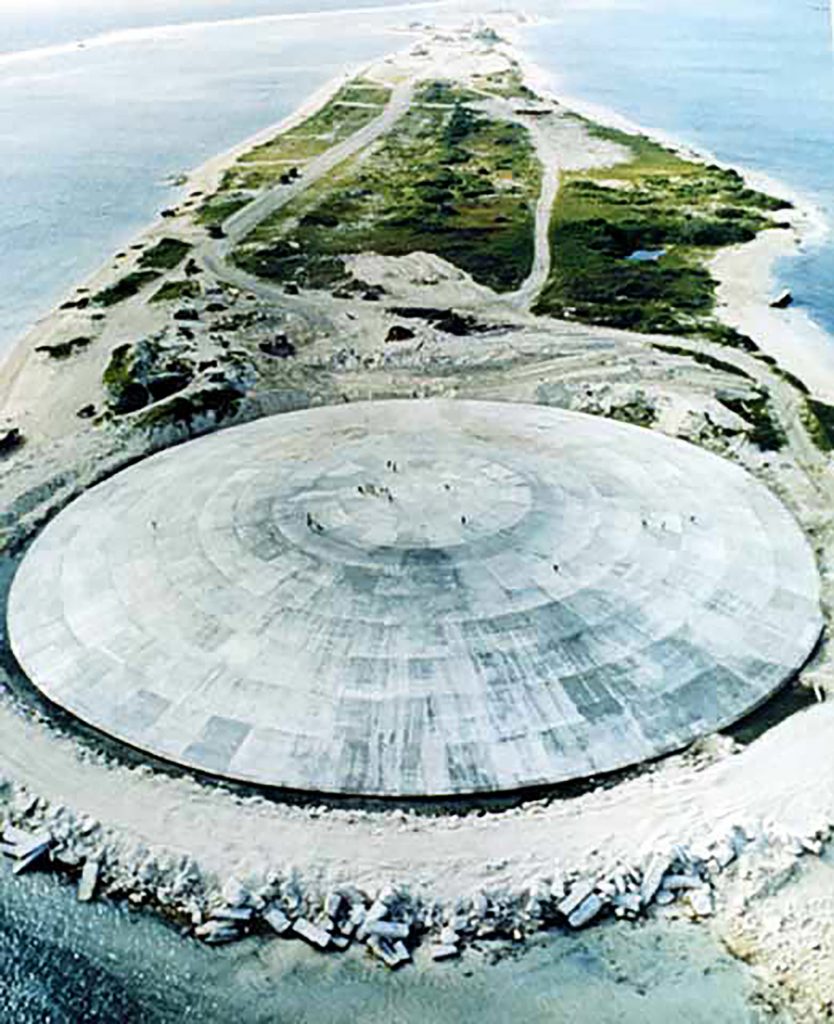Posts by jdrysdale
Interview: Shrimp recall highlights possible processing and packaging failures
The FDA is advising Walmart customers to throw out certain Great Value brand shrimp products due to possible radioactive contamination. Ken Buesseler, a senior scientist in marine radiochemistry at the Woods Hole Oceanographic Institution and a leading voice on radiation levels in seafood, talks with Host Marco Werman about his concerns. Listen to this HERE!
Read MoreSea of Thorium data Repository Available
We are excited to announce Café Thorium Post Doctoral Scholar Elena Ceballos with colleagues from WHOI and Universidad de Sevilla has compiled a Sea of Thorium Repository. Researchers can use this data and contribute! We hope you will use and add to this valuable dataset. Accurate assessment of the carbon export flux is crucial for…
Read MoreHot off the Press: Next steps for assessing ocean iron fertilization for mCDR
On Monday September 9th, 2024 a new paper was published in Frontiers: Climate: Next steps for assessing ocean iron fertilization for marine carbon dioxide removal. This important paper is a collaboration by ocean scientists across many ocean-related specialties who are members of ExOIS, Exploring Ocean Iron Solution group who endorse and are planning for an…
Read MoreTraining Workshop on Marine Radioactivity
In August 2024 the Center for Marine Environmental Radioactivity along with partners hosted a successful 4-day training workshop on marine radioactivity with participants from around the world. Watch out for a call for applications in another two years! WHO: University students, early career scientists and other professionals who are interest in radioactivity in the marine…
Read MoreThe future of ocean health
Human and environmental health are inextricably linked. Yet ocean ecosystem health is declining because of anthropogenic pollution, overexploitation, and the effects of global climate change. These problems affect billions of people dependent on oceans for their lives, livelihoods, and cultural practices. The importance of ocean health is recognized by scientists, managers, policy-makers, nongovernmental organizations, and…
Read MoreMinimizing harm: the concrete option for Fukushima tanks waste
Minimizing Harm: the concrete option for solving the accumulation of radioactively contaminated water at the Fukushima Daiichi Nuclear Power Plant site A paper prepared by the Independent Expert Panel to the Pacific Islands Forum Dr. Arjun Makhijani, Dr. Ferenc (Jacob Rolf) Dalnoki Veress, Dr. Robert Richmond, Dr. Anthony Hooker, Dr. Ken Buesseler12 June 2023 Abstract:…
Read MoreThe scale of the problem – Comments on a MA Dept. of Public Health report on radioactivity in untreated waters at Pilgrim Nuclear Power Station
On May 19, 2023 a report was released by the Massachusetts Department of Public Health Radiation Control Program (RCP) regarding testing done at the Pilgrim Nuclear Power Plant. The plant owners, currently in the process of decommissioning, plan to discharge 1.1 million gallons of radioactive contaminated water into Cape Cod Bay as a part of…
Read MoreSea Grant to study Water Pathways in Cape Cod Bay to model potential Pilgrim Wastewater release
Woods Hole Oceanographic Institution (WHOI) Sea Grant has been recommended for rapid response funding from the National Oceanic and Atmospheric Administration (NOAA) Sea Grant Program to study the pathways of circulation in Cape Cod Bay. This study is designed to shed light on the possible fate of 1.1 million gallons of radioactive wastewater from the…
Read MoreOcean Iron Fertilization: Assessing its potential as a climate solution
Hot off the press November 2nd, 2022 a new white paper by authors with the Exploring Ocean Iron Solutions (ExOIS) group including steering committee member Ken Buesseler. You can either review the report online, or download our PDF. ExOIS is an umbrella organization that strives to foster partnerships for scientific research as well as with…
Read MoreMore data needed before ocean water release of Fukushima water
A new commentary in the Japan Times by Ken Buesseler, highlights that the full extent of the radioactive isotopes in water in the tanks stored at the Fukushima Dai-ichi Nuclear Power Plant require more study before the water is dumped into the ocean. The Nuclear Regulatory Authority last month announced its approval for the discharge…
Read MoreThe greatest migration happens in darkness every day
A recent Scientific American article by Katherine Harmon Courage talks about the ocean twilight zone and the “Greatest migration on Earth (that) happens under darkness every day.” Every evening around the world trillions of zooplankton, many smaller than a grain of rice, hover hundreds of feet below the surface of the sea, waiting for their…
Read MoreKen named a Geochemistry Fellow by GS-EAG
Dr. Ken Buesseler has been named a Geochemistry Fellow by the Geochemical Society and the European Association of Geochemistry for his sustained and innovative contributions to the cycling of radionuclides in the ocean and their application to the study of the biological pump. This is a great honor, for which a ceremony will be held…
Read MoreThe Power of the Ocean
Opinion piece just published on The Hill by Ken Buesseler December 23, 2021 Carbon dioxide removal has been described both as humanity’s last, best hope to stave off the looming climate crisis, and as the stuff of dystopian science fiction. As is usually the case, reality falls somewhere in the middle. But if we take…
Read MoreComments on Nov. 2021 Fukushima Radiological Impact Assessment
On November 17, 2021 TEPCO (Tokyo Electric Power Company) made public a Radiological Impact Assessment concerning the discharge of water stored at the Fukushima Dai-ichi nuclear power plant site into the ocean. This water, treated with the ALPS method, was found in their assessment to likely have minimal effects on the public and environment and…
Read MoreNEW Report released on the roll of Oceans in Carbon Dioxide Removal
A NEW report has been released: A Research Strategy for Ocean Carbon Dioxide Removal and Sequestration. The report, by a committee of 12 with the National Academies of Science includes Dr. Ken Buesseler and provides a path forward for research and development needed to assess the viability of ocean-based carbon dioxide removal approaches. The report…
Read MoreOur Three “Hour” Tour
By Ken Buesseler, NORTHERN ATLANTIC OCEAN For those of us who grew up watching Gilligan’s Island, we all know the fateful story of the “three-hour tour.” Well, as this oceanographer knows, that TV storm is not that different from the weather we are facing out here in the North Atlantic on the research vessel Sarmiento…
Read MoreDive and Discover the Twilight Zone!
Despite some wavy weather and a rolling ship, the Twilight Zone team aboard the Spanish research vessel Samiento de Gamboa has been pushing through and collecting data and samples daily. Here you can follow the team of scientists, engineers, and students as they put some of the most advanced research tools available to the challenge…
Read More10 Years after Fukushima: I’m still worried
It has been 10 years since the accident at the Fukushima Dai-ichi nuclear power plants in Japan, and worries still abound. Read this opinion piece by Ken Buesseler: 10 Years After Japan’s Fukushima Daiichi Meltdown, I’m Still Worried | Opinion Nearly 10 years ago, I boarded a flight from Boston to Tokyo, filled with anxiety.…
Read MoreEVENT: March 4th – Fukushima and the Ocean: 10 Years of study and insight
PLEASE JOIN US Thursday March 4th For the 10th anniversary of the accident at the Fukushima Dai-ichi nuclear Power Plant we will be hosting a live discussion in both Japanese and English. There will be a virtual poster session and interactive questions. Please see the website for more information, FREE registration
Read MoreAddressing contaminants from Fukushima and the risks of ocean dumping
A fresh look at seawater stored in tanks on the Fukushima Dai-ichi Nuclear Power Plant site indicates that more research and analyses are needed prior to releasing the water back to the ocean. Nearly 10 years after the Tohoku-oki earthquake and tsunami devastated Japan’s Fukushima Dai-ichi Nuclear Power Plant and triggered an unprecedented release radioactivity…
Read MoreUnderstanding Risks of Radioactive Effluent at San Onofre, CA
Surfrider is a non-profit foundation dedicated to the protectoin and enjoyment of the world’s ocean, waves and beaches for all people. They have begun a campaign to “Get Nuclear Waste Off California’s Coast” and interviewed Ken Buesseler about liquid effluent being released from the now-closed San Onofre Nuclear Power Plant: How worried should we be?…
Read MoreThe danger of creating a designer planet
In a guest blog, Ken Buesseler from the Woods Hole Oceanographic Institution, calls for better understanding of the ocean’s biological processes before attempting to geoengineer climate solutions. It is natural in the face of an impending emergency to look for something—anything—that will avert the crisis. So it is understandable that in the absence of a…
Read MoreMARC XII – Conference Postponed to 2022
International Conference on Methods and Applications of Radioanalytical Chemistry (MARC) Website: http://www.marcconference.org/ ABOUT THE CONFERENCE The conference will continue the tradition set by the eleven previous MARC conferences by focusing on emerging developments in radioanalytical chemistry, with particular emphasis on new applications. These conferences have grown to become a major international forum for the field…
Read MorePNAS Cover Shot – Oceans capture more carbon than expected!
A new paper, “Metrics that matter for assessing the ocean biological carbon pump” published online April 6th, has landed on the COVER of the May 5th print edition of PNAS . Written by Ken Buessler, former PhD student Erin Black and collaborators Phil Boyd and David Siegle, they demonstrate that the depth of the sunlit…
Read MoreWHOI Labs donate supplies to the Covid-19 cause
Despite the fact that the Institution has been virtually shut down during this health crisis people have been working to gather and deliver gloves, masks, protective suits, and boot and shoe covers to Cape Cod Hospital to help healthcare workers deal with the Covid-19 crisis. Read more about how Cafe Thorium put our pile together…
Read MoreThe US government tested nuclear weapons on a chain of islands in the 1950s: A new project will allow locals to take their own samples
“Marine radiochemist Ken Buesseler is on a quest to provide fresh answers about how much radiation remains on the [Marshall] islands. “What we want to scientifically understand is, how is [radioactivity] going up or down over time, over the years and decades?” Buesseler said. He’s setting out this November to teach a duo of Marshalese…
Read MoreKen on Korean radio about releasing stored Fukushima plant water
As clean up continues at the Fukushima Dai-ichi nuclear power plant, workers have filled more than 1000 tanks with more than 1 million tons of contaminated water. Japan’s Minister of the Environment recently proposed slowly releasing the contents of these tanks into the ocean. This is of concern to the public and some in the…
Read MoreMinion Robots in the Ocean
Learn about how Minion robots, a technological development for the Ocean Twilight Zone Project, work to help scientists understand the global carbon cycle. Watch the video below and find more information on the Ocean Twilight Zone project page.
Read MorePutting the ‘nuclear coffin’ in perspective
Marine chemist weighs in on leaking radioactive dome in the Pacific By Evan Lubofsky There has been a flurry of headlines this summer about a “nuclear coffin” leaking radioactive waste into the Pacific Ocean. The coffin—a bomb crater filled with radioactive soil on a tiny island in the Marshall Islands—sits under a 350-foot-wide concrete lid…
Read MoreCafe Thorium T-SHIRTS for Sale!!
You can still buy our T-shirts! Individual sales are available at the following link. Unisex T-shirts and Long sleeved shirts are available. Women’s shirts are also available but require a minimum order of 6…. Please see the following link: https://www.customink.com/designs/cafeth2019/ezx0-00bz-ktzq/ Back Side of Shirt Details: Cafe Thorium World Tour 2009-2019 Antarctica – R/V Gould Bermuda…
Read MoreKen Buesseler Nominated as AAAS Fellow
Buesseler Elected to Class of 2018 AAAS Fellows Ken Buesseler of Woods Hole Oceanographic Institution has been named a Fellow of the American Association for the Advancement of Science (AAAS). Election as a AAAS Fellow is an honor bestowed upon AAAS members by their peers. As part of the Section on atmospheric and hydrospheric sciences,…
Read MoreVideo on nuclear testing and our work at the Marshall Islands
Watch this Video made by SEEKER for the series “Science in the Extremes” Season 2, Episode 6. You Tube Link to find out more about SEEKER and other episodes in the series: https://www.seeker.com/videos/earth/is-the-pacific-ocean-still-radioactive-from-cold-war-nuclear-tests
Read MoreWHOI Among First Funding Recipients of The Audacious Project
What if we explored the ocean’s vast twilight zone, teeming with undiscovered life? Today, the Woods Hole Oceanographic Institution (WHOI) was awarded $35 million—the largest philanthropic gift in the Institution’s history—to do just that. The award comes from The Audacious Project, a bold new philanthropic collaboration housed at TED to fund critical ideas that have…
Read More6 year update on Our Radioactive Ocean and findings off west coast
View Updated results from Our Radioactive Ocean – 6 years following the accident at Fukushima Dai’ichi Nuclear Power Plant.
Read MoreBBC interview on radioactivity at the Marshall Islands
The Marshall Islands have some of the most beautiful beaches in the world, but their past as a former US nuclear weapons test site means that hardly anyone lives there. Ken Buesseler, Woods Hole Oceanographic Institution, describes the Runit Dome that was constructed to hold up to 80,000 tonnes of radioactive debris. LISTEN to an…
Read MoreBack to Bikini
Scientists study lingering radioactivity of 1946-1958 nuclear weapons tests By Evan Lubofsky | June 5, 2017 Ken Buesseler climbed the highest peak on Enewetak Atoll and peered out over the expanse of paradise below. Offshore lay an azure lagoon inked with a dark-blue circle at its center. But this hole wasn’t natural. It was created…
Read MoreJune 16 – What we Talk About when we Talk About Radiation
12:00 Japan Time Station 28; 36N, 141.4E It’s been a while since I’ve seen a newspaper or checked the internet, but I seem to remember a fair bit of confusion in the media over how radiation is measured before we left. So here goes nothing. The most basic radiation detector provides its readings in counts.…
Read MoreJune 18 – Home Again, Home Again
12:50 a.m. Japan Time Station 32; 37N, 142E Just like that. The CTD is stowed, the last net is aboard. The engines have spooled up and we’re slowly putting the final station behind us, though we’ll initially head northwest to a point half way between Stations 32 and 25. From there, we’ll turn south and…
Read MoreJune 17 – Getting the Story
3:45 a.m. Japan Time Station 29; 36.5N, 142E We haven’t had much news out here on the ship the past two weeks other than our twice-daily satellite email uplinks. My wife, however, just sent me something that makes me a little sad. She said that when she tells people where I am one of the…
Read MoreJune 15 – In the Zone
2:00 a.m. Japan Time Station 25; 37.5N, 141.4E There are demi stations, standard stations, and super stations. Then there are super-duper stations. At a little before midnight, we arrived at Station 25, our closest approach to the Fukushima Daiichi nuclear power plant that is the source of the radiation we are trying to measure. We…
Read MoreJune 14 – The Cause of it All
12:00 p.m. Japan Time Station 23; 37.5N, 142E I’ve touched on marine chemistry, physical oceanography, and marine biology over the past few days, now it’s time to delve into the dark arts of marine geology. Dark because much of what marine geologists study takes place deep beneath the bottom of the ocean. Late last night…
Read MoreJune 13 – All Work, a Little Play
2:00 Japan Time Station 21; 25N, 142.5E We’ve entered a stretch that calls for us doing five so-called “super stations” interspersed with what we’ve termed “demi stations.” Our standard sampling station includes a CTD cast to 1,000 meters with a net on the wire that gathers phytoplankton from the top 100 meters, four Bongo net…
Read MoreJune 12 – Tracers II
12:00 Japan Time Station 18; 37N, 143E We’ll come back to tracers in a bit. There are a couple of changes to report, first. For one, the weather has eased considerably. Seas are easy and the sun is just barely shining through a hazy sky. About the only wind out there is whatever we can…
Read MoreJune 11 – Tracers
2:00 p.m. Japan Time 35N, 143E It’s Saturday, so I’m going to let someone else do some of my work for me today. In his book Seven-Tenths: Love, Piracy, and Science at Sea, WHOI’s David Fisichella does as good a job as anyone in describing the way that chemical oceanographers use tracers to study the…
Read MoreJune 10 – Lines in the Water
10:00 a.m. Japan Time Station 10; 38N, 144E Last night we came to the end of our first sampling line, the furthest offshore. Everyone was looking forward to a little down time (even the people on the midnight to noon watch) and there were grand plans floated to watch movies or get caught up on…
Read MoreJune 9 – Chasing Fish
3:00 p.m. Japan Time Station 9; 38N, 147E We had one good net haul after sunset yesterday and had a second around midnight cancelled due to weather that the biologists were sad to miss. Then early this morning, as soon as the sun came up, the net came back almost empty. What we were seeing…
Read MoreJune 6 – Why We’re Here
2:30 p.m. Japan Time 34.07N; 145.55E We’re on our way to the first sampling station. Now it’s all about finalizing water budgets—making sure we get enough water at the right depths to meet the needs of all the different groups who will be doing work on the ship and back on shore. It’s all about…
Read MoreJune 5 – Testing 1, 2 . . .
7:00 p.m. Japan Time 34 24N, 142 41E (100 nm west of Japan) Today was a test day, starting with the obligatory one long bell that signals all hands to muster at their emergency stations. For us in the science crew, that means we grab our life vests and survival suits and head to the…
Read MoreJune 8 – Connections
6:30 a.m. Japan Time Station 4; 35.50N, 147E Today is World Ocean Day. Sort of snuck up on me because the ship sort of exists outside of time and I’m not really looking at my calendar except to label my blog posts. Hard to imagine a more fitting place to spend the day. We now…
Read MoreJune 4 – To Sea
We are under way. At 2:30 p.m., our Japanese pilot came aboard (very dapper in his blue suit and fedora), a tug tied up to our stern, and by 3:00 sharp we had slipped our lines and were edging away from the dock into the busy Tokyo Harbor traffic. Tourists on the upper deck of…
Read More
